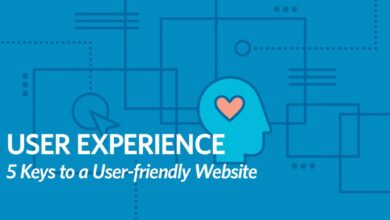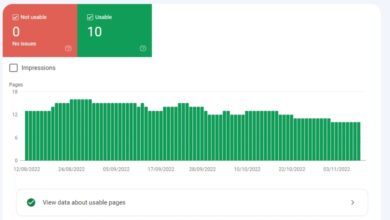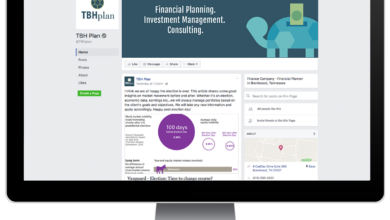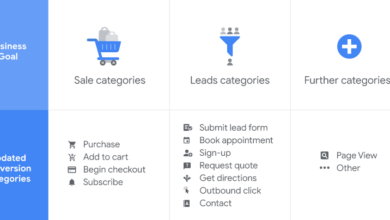
CRO Testing Your Guide to Optimization
CRO testing is the process of optimizing your website or app to boost conversions. It involves understanding user behavior and implementing changes to improve the percentage of visitors who complete desired actions, like purchasing a product or signing up for a newsletter. This in-depth guide delves into everything from defining CRO testing to practical case studies, exploring various methodologies, tools, and ethical considerations.
From A/B testing to multivariate experiments, we’ll cover the strategies and techniques to refine your conversion rate. We’ll also discuss critical metrics like conversion rate and bounce rate, essential for evaluating the success of your optimization efforts. Plus, we’ll explore the vital link between user experience and CRO testing, and the ethical considerations that must be part of the process.
Defining CRO Testing
Conversion Rate Optimization (CRO) testing is a systematic approach to improving the performance of a website or app by enhancing user experience and increasing the percentage of visitors who complete desired actions, like making a purchase or signing up for a newsletter. This process involves meticulous analysis of user behavior, identifying pain points, and implementing changes to optimize the conversion funnel.
Ultimately, CRO testing aims to maximize the return on investment (ROI) by driving more valuable actions from website visitors.CRO testing goes beyond simply making a website look nice. It’s a data-driven process focused on understanding user motivations and preferences, and then adapting the website or app accordingly. This is achieved through a combination of careful experimentation, rigorous testing, and iterative improvements.
It’s about understanding the “why” behind user actions and proactively addressing any obstacles to conversions.
Key Objectives of CRO Testing
CRO testing is fundamentally driven by a set of key objectives. These include increasing the percentage of visitors who complete desired actions, such as purchasing a product or signing up for a service. A secondary objective is to enhance user experience, leading to a more satisfying and engaging interaction with the website or app. Ultimately, these efforts are geared towards maximizing the return on investment (ROI) from marketing efforts.
A/B Testing vs. Multivariate Testing
A/B testing involves comparing two versions of a webpage or element to determine which performs better. For example, you might test two different button colors to see which generates more clicks. Multivariate testing, on the other hand, tests multiple variations of multiple elements simultaneously. This allows for a more comprehensive understanding of how different combinations of elements affect conversions.
For instance, a multivariate test could simultaneously examine different button colors, calls to action, and layout designs to determine the optimal combination.
Types of CRO Testing Methodologies
Various methodologies are employed in CRO testing, each with its own strengths and weaknesses. These methodologies range from simple A/B tests to more complex multivariate tests. They are often used in combination to gain a comprehensive understanding of user behavior and preferences.
- A/B Testing: A fundamental method comparing two versions of a webpage element. It’s crucial for identifying simple improvements, such as changing a button color or modifying a headline.
- Multivariate Testing: This method evaluates multiple variations of multiple elements simultaneously. It helps uncover complex interactions between different elements, yielding more comprehensive insights into user preferences.
- Split Testing: This approach tests various versions of a website’s elements against a control group. It allows for the evaluation of diverse modifications to see which performs best.
- Landing Page Optimization: This technique focuses on enhancing landing pages to increase conversions. It involves examining page elements, such as headlines, calls to action, and imagery, to optimize the user experience.
Stages in a Typical CRO Testing Project
A typical CRO testing project progresses through distinct stages. These stages ensure a systematic and data-driven approach, ultimately maximizing the impact of the optimization efforts.
- Define Objectives: This involves clearly identifying the goals of the testing project. This step is crucial to guide all subsequent activities and to ensure that the testing aligns with business objectives.
- Analyze Data: This phase focuses on gathering and analyzing relevant data about user behavior and website performance. This data is crucial for identifying areas for improvement.
- Develop Hypotheses: Based on the analysis, hypotheses are formulated about potential improvements. These hypotheses provide direction for the subsequent testing phase.
- Implement and Test Changes: The identified hypotheses are implemented, and A/B or multivariate tests are conducted to evaluate their effectiveness.
- Analyze Results and Iterate: Results from the tests are meticulously analyzed to determine which changes yield the most significant improvements. This stage involves iterating on the changes to optimize performance continuously.
CRO Testing Tools and Technologies
CRO testing tools are essential for businesses looking to optimize their websites and applications for maximum conversion rates. These tools provide a structured approach to A/B testing, multivariate testing, and other crucial elements of CRO. By meticulously analyzing user behavior and response to different design elements, businesses can make data-driven decisions, leading to improved user experience and ultimately, increased revenue.Understanding the capabilities and limitations of various CRO testing tools is crucial for making informed choices that align with specific business goals.
Different tools cater to different needs and budgets, and understanding their strengths and weaknesses is vital for selecting the right solution. This exploration delves into the features, functionalities, and integration aspects of popular CRO testing tools.
Popular CRO Testing Tools
Various tools empower businesses to perform comprehensive CRO testing. Each tool offers a unique set of features and functionalities, and the best choice often depends on the specific needs and resources of the organization.
Features and Functionalities of Different Tools
Many CRO testing tools provide robust A/B testing capabilities. This allows businesses to compare different versions of web pages or elements to identify which performs better. These tools typically track key metrics like click-through rates, conversion rates, and bounce rates to determine the effectiveness of various iterations. Beyond A/B testing, some tools support multivariate testing, allowing for the simultaneous testing of multiple variables to understand their combined impact.
Further functionalities may include heatmaps and recordings of user sessions to provide insights into user behavior on the website. Advanced tools might integrate with analytics platforms for a comprehensive view of user interaction and conversion data.
Comparison of CRO Testing Tools
A comparative analysis of popular CRO testing tools is helpful in evaluating their suitability for different businesses. Factors like pricing models, ease of use, and the scope of features vary significantly. Consider the size of the project, the budget, and the desired level of customization when making a selection. Some tools are geared towards simpler projects with fewer features, while others are designed for more complex campaigns requiring extensive customization and detailed reporting.
CRO testing is all about optimizing your website for better conversions, and that often involves understanding user behavior. One crucial aspect is analyzing how retargeting strategies affect your blogging KPIs. For instance, measuring the effectiveness of your retargeting campaigns in driving blog growth is a key part of the process, as detailed in this insightful guide on retargeting growth blogging KPIs.
Ultimately, successful CRO testing relies on a deep understanding of your audience and how they interact with your content, so this data is vital for continuous improvement.
Free tools are often limited in features and data capacity, whereas paid options provide more comprehensive solutions.
Integration with Websites and Applications
Integrating CRO testing tools into websites and applications is typically straightforward. Most tools offer APIs or seamless integration methods to connect with existing platforms. Detailed documentation and support resources often accompany these tools to guide users through the integration process. The integration process usually involves adding tracking scripts or snippets of code to the website or application.
CRO testing is all about optimizing your website for better conversions, but it’s crucial to measure the success of these changes. Understanding key metrics is essential, and looking at the top 10 social media KPIs for successful marketing, like engagement rate and reach top 10 social media kpis for successful marketing , can provide valuable insights. Ultimately, tracking these metrics allows you to fine-tune your CRO strategies and boost your bottom line.
This allows the tool to collect data about user interactions and conversion rates. After the integration, users can run A/B tests, analyze the results, and implement the changes that improve conversions.
List of Free and Paid CRO Testing Tools
- Free Tools: Google Optimize, Optimizely (limited free plan). These tools offer basic A/B testing capabilities and can be a valuable starting point for smaller businesses or those with limited budgets. Free tools often come with limitations on the number of tests, data storage, and support. These limitations may restrict the scope of testing and analysis.
- Paid Tools: Optimizely, VWO, AB Tasty, ConvertKit, Hotjar. These tools provide advanced features such as multivariate testing, sophisticated analytics, and dedicated customer support. They are generally better suited for businesses with larger budgets and more complex optimization needs. The cost of paid tools typically correlates with the level of features and support they offer.
Metrics and Data Analysis in CRO Testing
CRO testing is a crucial process for optimizing websites and improving user experience. A key component of this process is the meticulous analysis of data, which helps identify areas for improvement and ultimately boosts conversion rates. Understanding the relevant metrics and how to interpret them is fundamental to successful CRO testing.
Critical Metrics for Measuring CRO Success
Conversion rate, bounce rate, and average session duration are essential metrics for evaluating the effectiveness of CRO efforts. These metrics provide insights into user behavior and website performance, guiding optimization strategies.
Tracking and Analyzing Conversion Data
Conversion data is the lifeblood of CRO testing. Precise tracking is paramount to understanding user journeys and pinpointing areas needing improvement. Tools like Google Analytics and dedicated CRO platforms offer robust functionalities for tracking conversions, including form submissions, purchases, or sign-ups. Analyzing this data allows for a deep dive into user actions, revealing patterns and trends. Crucially, the analysis should not only identify what happened but alsowhy* it happened.
This requires correlation with other metrics and a comprehensive understanding of the user experience.
Importance of User Behavior Data in CRO Testing
User behavior data goes beyond simple conversion rates. Understanding how users interact with the website—the pages they visit, the time spent on each, and the paths they take—is critical. This behavioral data paints a richer picture of the user experience, revealing pain points and areas where users drop off. Tools dedicated to user session recordings, heatmaps, and scroll maps provide invaluable insights into user journeys, revealing areas of confusion or friction on the website.
Essential Tools for Data Analysis in CRO Testing
Several tools facilitate data analysis in CRO testing. Google Analytics is a powerful free tool that tracks user behavior, providing insights into traffic sources, user demographics, and conversion rates. Specialized CRO platforms offer advanced features, such as A/B testing tools and user behavior analysis dashboards, to streamline the optimization process. Other essential tools include Hotjar, Crazy Egg, and VWO, which provide detailed user behavior insights.
Comparison of CRO Metrics
| Metric | Description | Importance | Example |
|---|---|---|---|
| Conversion Rate | Percentage of visitors who complete a desired action. | Key indicator of success. A higher conversion rate typically translates to greater profitability. | 5% |
| Bounce Rate | Percentage of visitors who leave the site after viewing only one page. | Indicates user engagement. A high bounce rate often suggests issues with the landing page or website navigation. | 70% |
| Average Session Duration | Average time spent by a visitor on the site. | Shows user engagement. A shorter average session duration might signal a lack of compelling content or clear calls to action. | 2 minutes |
| Exit Rate | Percentage of users that leave the site from a specific page. | Identifies weak points in the user journey. High exit rates from a specific page could indicate a problem with the content or a lack of clear next steps. | 85% from the checkout page |
| Pageviews per session | Average number of pages viewed per user session. | Shows how engaged users are with the site’s content. A low number may indicate a need to improve the content or navigation. | 2 pages per session |
CRO Testing Strategies and Techniques
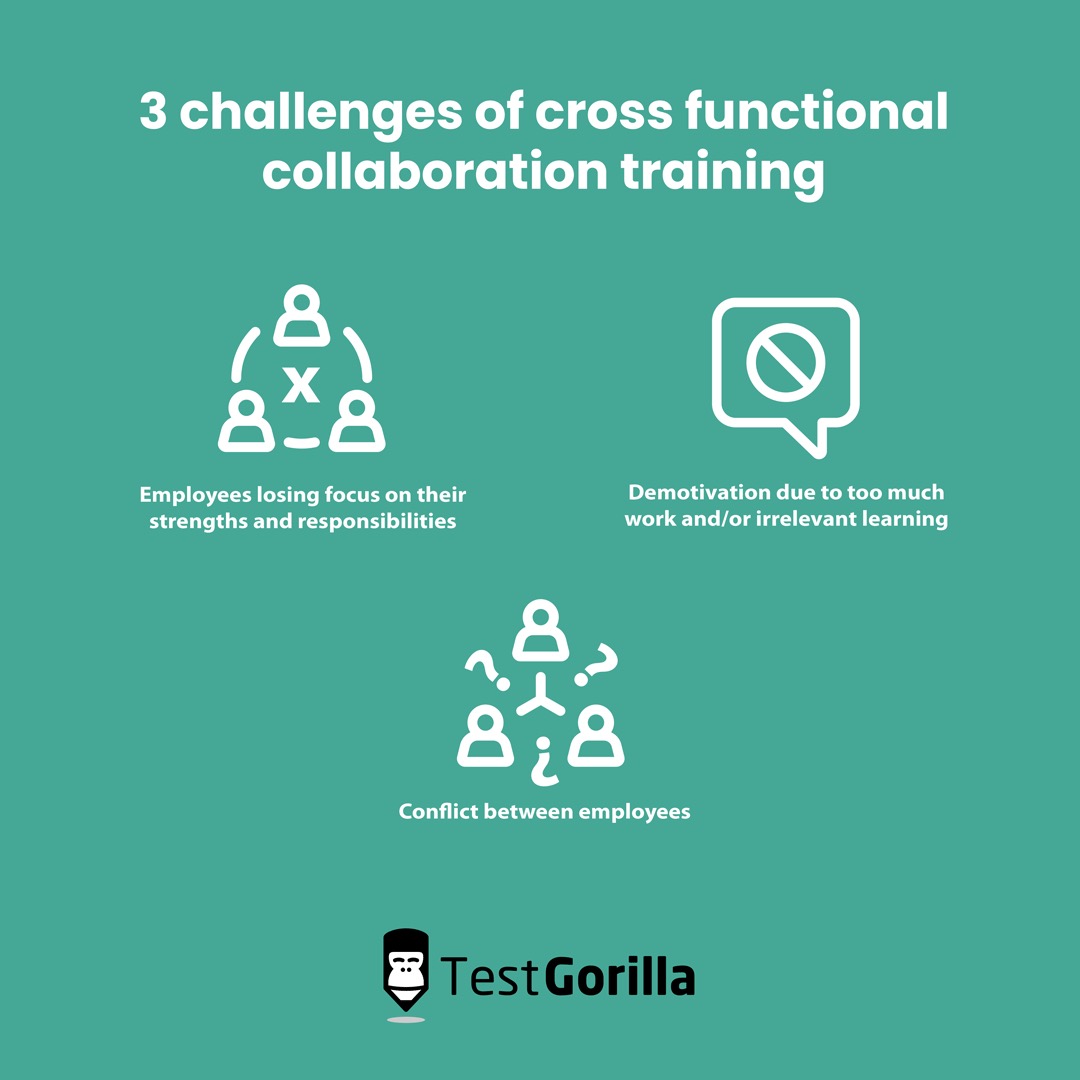
Conversion Rate Optimization (CRO) is a crucial aspect of online marketing, focusing on improving the percentage of website visitors who complete a desired action, such as making a purchase or filling out a form. Effective CRO strategies leverage data-driven insights to identify pain points and opportunities for improvement, ultimately leading to increased revenue and business growth. This section dives into various strategies and techniques employed in CRO testing.
Landing Page Optimization Strategy
A robust landing page optimization strategy should begin with a clear understanding of the target audience and their needs. Analyzing user behavior on the existing landing page, through tools like heatmaps and scroll maps, can identify areas where users are dropping off or failing to engage. This data informs the design and content modifications. Prioritize testing elements with the highest potential impact.
For example, if a significant portion of users abandon the page on the call-to-action (CTA), testing variations of the CTA button copy, placement, and design might yield significant improvements. Conducting thorough user research and incorporating A/B testing are critical components of this strategy.
Testing Hypotheses for Improved Conversion Rates
Conversion rate improvement hinges on well-defined hypotheses. A strong hypothesis Artikels a specific change and its anticipated impact on conversions. For instance, “Changing the color of the CTA button from blue to green will increase conversions by 5%.” Testing various hypotheses, like altering headline wording, modifying form fields, or adjusting layout elements, is vital. A comprehensive approach should consider user feedback and industry best practices.
By testing and analyzing the results of these changes, you can identify effective improvements and refine your approach.
CRO testing is all about optimizing your website for better conversions, and that often means A/B testing different elements. Finding the perfect combination of design, copy, and functionality is key. Tools like chrome extensions for marketing, such as those available on chrome extensions for marketing , can provide insights and automate certain aspects of the testing process, ultimately helping you fine-tune your approach to improve results.
This data-driven strategy is crucial for successful CRO testing.
A/B Testing and Multivariate Testing Techniques, Cro testing
A/B testing involves comparing two versions of a webpage element (e.g., headline, button, image) to determine which performs better. Multivariate testing expands on this by evaluating multiple variations of different elements simultaneously. For example, testing different headlines, calls-to-action, and images together helps determine the most effective combination. Careful consideration of statistical significance and sample size is crucial to avoid false positives.
Tools like Optimizely and VWO are frequently used to manage and analyze these tests. Proper A/B testing protocols include random assignment of visitors to different variations and rigorous data analysis.
Examples of Successful CRO Testing Campaigns
Several successful CRO campaigns demonstrate the impact of these strategies. One campaign focused on a travel website saw a 20% increase in booking conversions after testing various headline options. Another campaign for an e-commerce site saw a 15% conversion lift by streamlining the checkout process and reducing form fields. These examples highlight the effectiveness of targeted testing and data-driven decisions.
These real-world successes underscore the value of a meticulous and data-driven approach to CRO.
Comparison of CRO Testing Approaches
Different CRO approaches vary in their focus and scope. For instance, a data-driven approach prioritizes user data and analytics, while a design-centric approach emphasizes aesthetic appeal and usability. The most effective strategy often blends these elements, using data to inform design decisions and design principles to improve user experience. A/B testing focuses on isolating individual element variations, while multivariate testing evaluates the combined impact of multiple changes.
Each approach has its strengths and weaknesses, and the ideal approach depends on the specific goals and resources of the organization.
User Experience (UX) and CRO Testing
User experience (UX) is paramount to successful conversion rate optimization (CRO). A positive user experience leads to increased engagement, satisfaction, and ultimately, higher conversion rates. Understanding how users interact with your website and identifying areas for improvement are crucial steps in achieving optimal results. This section delves into the intricate relationship between UX and CRO testing, providing actionable insights for improving conversion rates.CRO testing isn’t just about tweaking button colors; it’s about understanding and improving the entire user journey.
A seamless and intuitive experience encourages users to complete desired actions, ultimately boosting conversion rates. By focusing on UX, CRO strategies become more effective, leading to a higher return on investment.
Relationship Between User Experience and Conversion Rates
User experience directly influences conversion rates. A positive UX fosters trust, encourages engagement, and makes it easy for users to accomplish their goals. Conversely, a poor UX creates friction, leading to frustration and abandonment. Users are more likely to convert when they feel comfortable, confident, and guided through the process. This positive experience translates into higher conversion rates.
Conducting User Research to Inform CRO Testing Decisions
Thorough user research is fundamental to effective CRO testing. It helps identify pain points, understand user needs, and uncover opportunities for improvement. Methods like surveys, interviews, and usability testing provide valuable insights into user behavior. Analyzing user feedback gathered from various research methods informs data-driven CRO decisions.
Importance of Usability Testing in CRO
Usability testing plays a vital role in CRO by providing real-time feedback on how users interact with a website. Observing users as they navigate through the website reveals usability issues, friction points, and areas where users get confused or frustrated. This feedback allows for iterative improvements in the user experience, resulting in better conversion rates. This method of testing is essential for identifying and addressing issues that may not be apparent from analytical data alone.
Improving User Experience Through CRO Testing
CRO testing provides a framework for implementing user-centered improvements. Identifying areas where users struggle and testing different solutions allows for targeted optimization. A/B testing various design elements, such as layout, navigation, and call-to-action buttons, helps determine what resonates best with the target audience. Implementing changes based on the results of CRO tests ensures user experience is constantly being refined.
Examples include adjusting form fields, simplifying checkout processes, or improving page load times.
Impact of Website Design Elements on Conversion Rates
Website design elements significantly impact conversion rates. Elements like navigation, layout, visual hierarchy, and color schemes all contribute to the overall user experience. A well-designed website ensures easy navigation, clear information, and a visually appealing experience, ultimately driving conversions. Effective use of these elements fosters a seamless and enjoyable user journey, leading to higher conversion rates. Poorly designed websites, conversely, can deter users, hindering conversion rates.
Case Studies and Examples of CRO Testing
CRO testing isn’t just theoretical; it’s a powerful tool with real-world applications. Businesses across various sectors have used it to optimize their websites and improve conversion rates. Let’s dive into some compelling case studies and examples to understand the impact of well-executed CRO strategies.Analyzing successful and unsuccessful CRO campaigns provides valuable insights into what works and what doesn’t.
This allows us to learn from both successes and failures, refining our strategies and maximizing the potential of CRO.
Successful CRO Testing Implementations
Understanding how businesses leverage CRO testing is crucial for effective implementation. Several successful campaigns highlight the positive impact of meticulous testing and optimization.
- An online clothing retailer A/B tested different call-to-action buttons. By changing the button color from grey to vibrant orange, they observed a 12% increase in click-through rates. This seemingly small change, driven by user-centered design and CRO testing, resulted in a substantial boost in sales.
- A SaaS company redesigned its pricing page. Through rigorous CRO testing, they simplified the pricing structure and added clear, concise descriptions of each tier. The result? A 20% rise in trial sign-ups, demonstrating how a user-friendly pricing page can directly impact conversions.
- A travel agency optimized its booking form. They tested different layouts, focusing on reducing the number of fields required for a booking. The outcome was a significant 15% increase in bookings, showcasing the impact of a streamlined user experience.
Failed CRO Testing Experiments and Reasons
Not all CRO experiments yield positive results. Analyzing failed attempts provides crucial lessons for future strategies.
- A food delivery app tested a new, minimalist design for their app homepage. However, the new design removed key information that users relied on for navigation. This led to a significant decrease in order frequency, highlighting the importance of understanding user behavior and existing patterns.
- An e-commerce store tested a pop-up form for abandoned carts. While the pop-up itself was well-designed, it was deployed too aggressively, interrupting the user experience. This caused users to abandon their shopping carts in frustration, leading to a failure in the experiment.
- A financial services website tested a complex and visually overwhelming infographic on its investment page. The result was a drastic decrease in the time users spent on the page and a decline in inquiries. This highlighted the importance of clear and concise presentation of information.
Results of CRO Testing Campaigns
This table presents a summary of various CRO testing campaigns, illustrating the potential impact.
| Campaign | Changes Implemented | Conversion Rate Improvement | Additional Insights |
|---|---|---|---|
| E-commerce Website Redesign | Improved navigation, clear calls-to-action | +15% | Reduced bounce rate by 10% |
| Landing Page Optimization | Simplified form, clear value proposition | +18% | Increased time on page by 12% |
| Blog Post Optimization | Improved readability, engaging visuals | +10% | Increased social media shares by 15% |
Ethical Considerations in CRO Testing

Conversion rate optimization (CRO) testing, while powerful for improving website performance, demands a strong ethical framework. Ethical considerations are paramount to ensure that users are not manipulated or exploited during the testing process. This includes respecting user privacy, ensuring data security, and avoiding deceptive or misleading practices.CRO testing relies heavily on user data. A thorough understanding of ethical considerations is crucial to conducting the tests in a way that upholds user rights and maintains trust in the process.
User Privacy and Data Security
Protecting user privacy is paramount in CRO testing. Data collected should be used solely for the purpose of optimization, and should not be shared or sold to third parties without explicit consent. Implementing robust security measures to safeguard user data is critical to avoid breaches and protect sensitive information. Data anonymization and pseudonymization techniques are essential to ensure user privacy without compromising the value of the data for testing purposes.
Ethical Data Collection and Usage
Ethical data collection involves obtaining informed consent from users before collecting any data. This consent should be clear, concise, and easily accessible. The purpose of the data collection should be transparent to the user, outlining how the data will be used and for what specific optimization purposes. Data should be collected responsibly and legally, ensuring compliance with relevant data protection regulations such as GDPR.
Avoiding Manipulation of User Experience
Manipulating user experience in CRO testing is unethical and can lead to inaccurate results. Tests should be designed to provide users with a genuine and unbiased experience. Avoid introducing deceptive elements or hidden incentives that could influence user behavior in ways that aren’t reflective of their natural choices. Always prioritize user well-being and provide clear and honest information about the purpose of the tests.
Transparency and User Control
Users should be informed about the nature of the tests being conducted and have the ability to opt out of participation at any time. A clear and easily accessible opt-out mechanism is essential to uphold user control. Communicating the purpose and design of the tests transparently is crucial to gaining user trust and ensuring ethical compliance.
Ultimate Conclusion
In conclusion, CRO testing is a crucial element of online success. By understanding the process, choosing the right tools, and focusing on user experience, you can significantly improve your conversion rates. The key takeaway is that consistent monitoring, data analysis, and iterative improvements are essential for ongoing success in the ever-evolving online landscape.
